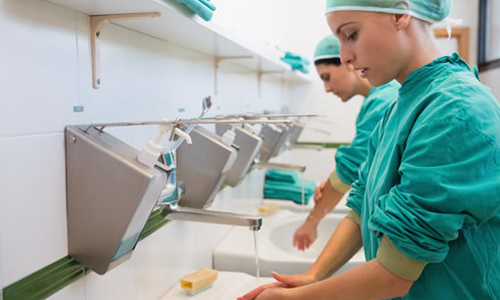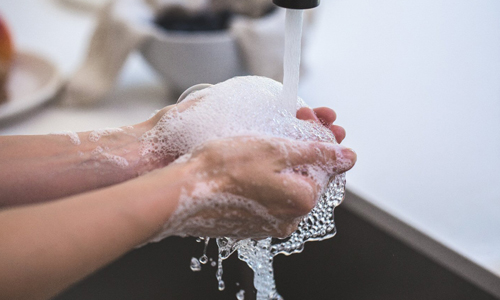Tailoring Sluice Room Equipment To Your Needs
Source the right sluice machines for your hospital or care home
Maintaining good infection prevention and control (IPC) means implementing a holistic solution with no weak links. That will often mean custom configuring standard equipment to your precise requirements.
This will require a detailed step-by-step process to ensure that your IPC strategy is sound and the sluice room equipment you specify will provide safe and effective infection control in the most budget-appropriate and energy-efficient way.
There are 16 steps in this process…
READ OUR DETAILED GUIDE TO SLUICE ROOM EQUIPMENT
1. Carry out a needs assessment
Identify the specific IPC needs and goals of your hospital(s) or care home(s). Consider factors such as patient/resident load, available space, existing infrastructure and budget constraints.
2. Regulatory compliance
Determine the local, national and international regulations and guidelines that your sluice room solutions must adhere to. These can include healthcare waste management standards, infection control requirements, and safety regulations. You will find a list of key UK regulations in our detailed guide to sluice room equipment.
3. Engage with stakeholders
Involve key stakeholders including clinicians, infection control teams, facilities management and procurement experts in the decision-making and equipment specification process. Their input will be important in helping you to define the exact requirements of your sluice room(s).
4. Sluice room space and layout
Assess the available space for the sluice room. Consider how machines will fit within the space and how they will be positioned for optimal workflow. Compared with hospitals, care homes tend to have less space available for sluice room facilities.
DDC Dolphin’s team of experts can help you to identify unused/underused space that can accommodate a new or extended sluice room.

5. Capacity and volume
Determine the volume of waste that is expected to be generated daily. This will help you to specify the required capacity of machines, and whether they will be bedpan washer disinfectors or medical pulp macerators. If you are specifying macerators, consider how much space you will need for the storage of medical pulp.
6. Waste types
Identify the types of waste that will be processed. This could include bedpans, urine bottles or other medical waste. Specify any special requirements for handling different waste categories.
7. Infection control
Define your hospital or care home’s infection control protocols and requirements. This may include the choice of disinfection methods and the need for automated cleaning and sanitisation processes. Think about air purification and also how you will keep water traps safe and free from infection.
8. Budget and financial considerations
Set a realistic budget. Consider not only the initial equipment costs but also ongoing operational and maintenance expenses. Discuss financing options if necessary. Get specialist advice on:
- using tax breaks to minimise capital equipment costs
- planned preventative maintenance (PPM) to increase machine uptime and prevent costly breakdowns
- care plans to reduce the cost of servicing and essential sluice machine chemicals.
Tailored service contracts can address your hospital or care home’s specific maintenance needs – and provide faster response times.
These servicing plans not only help you to cut costs, they also make budgeting much more predictable – giving you peace of mind.
9. Sluice machine customisation and features
Specify any customisation requirements. DDC Dolphin sluice machines can be customised during installation. Our engineers can customise machines’ software to adjust cycle times.
This ensures the most economical use of energy and water – reducing operating costs year after year, while delivering the required infection prevention and control.
And customising machines for reduced noise levels is crucial for inpatient care areas where noise can be disruptive.
Furthermore, DDC Dolphin can provide complete sluice room refurbishments (or create new facilities) as a turnkey service. Your sluice room(s) will be fitted out to your exact custom specifications. The service includes:
- a free initial consultation and free design survey
- supplying and installing a powerful but economical bedpan washer disinfector or medical pulp macerator
- supplying and installing a UVMATIC air purifier to kill bacteria and prevent malodours
- supplying and installing tough and hygienic stainless steel furniture that can cope with strong cleaning agents
- overseeing all plumbing and electrical work
- fitting impermeable, impact-resistant Altro Whiterock™ or other similar cladding to the walls
- installing healthcare-grade flooring
- project managing the entire sluice room installation – so you have just one point of contact and one invoice
- excellent aftercare – ensuring your sluice room continues to deliver optimum performance.
10. Integration with existing systems
Determine if the sluice room solutions need to integrate with other hospital systems, such as electronic health records or data monitoring technology.
11. Vendor selection
Research and select reputable vendors or manufacturers with specialist experience in providing tailored sluice room solutions. Obtain references and visit installations where possible.
12. Request for proposal (RFP)
Create a detailed RFP that outlines all your specific requirements and the IPC challenges you need to overcome.
This document should solicit proposals from potential vendors, ensuring they understand your hospital or care home’s unique requirements.
13. Evaluation and selection
Evaluate vendor proposals based on:
- compliance with the RFP
- reputation for product quality, consistency, technical expertise and customer service
- ability to meet your hospital or care home’s unique needs
- cost-effectiveness – not just at the start but over the lifetime of the contract, because your sluice machines should last at least a decade.
Consider on-site demonstrations if feasible. Read how Oakland Care trialled the Vacumatic waste management system.
14. Contract negotiation
Once a vendor is selected, negotiate a contract that includes terms for installation, warranty, maintenance and service agreements.
15. Training and implementation
Ensure that all your staff receive proper training on the use of the sluice room equipment.
DDC Dolphin’s sluice machines feature intuitive controls (especially the New Panamatic Midi bedpan washer disinfector). This makes them easy to operate by staff who may have lacked training in the past, or who may not speak English as their first language.
It is important to coordinate the installation and implementation process in the most efficient way possible. As a global leader in the provision of sluice room equipment, DDC Dolphin is ideally placed to assist with this.
We are experts in the maintenance of sluice machines by all manufacturers – so we can assist in the decommissioning and environmentally friendly disposal of your old equipment in the most efficient way possible.
16. Monitoring and feedback
Continuously monitor the performance of the sluice room solutions. Gather feedback from users and make adjustments as necessary to ensure your equipment meets your hospital or care home’s evolving needs.
DDC Dolphin’s secure online portal enables you to monitor the condition, efficiency and maintenance requirements of your sluice machines quickly and easily around the clock.
Our specialists can provide expert advice on how you can continue to get the best from your sluice room(s).
VIEW OUR FULL RANGE OF SLUICE ROOM SOLUTIONS



